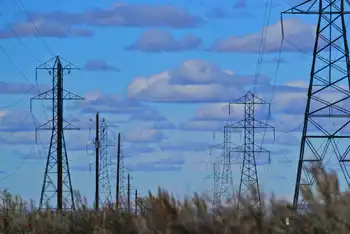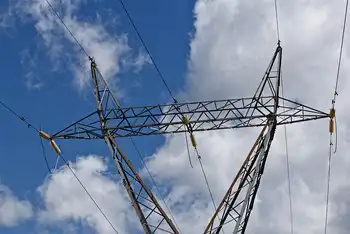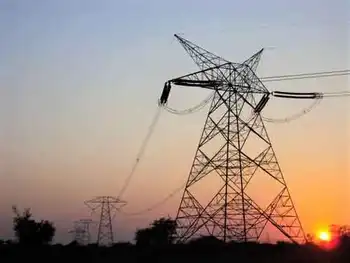Major offshore wind contract on horizon
NRG Energy's Bluewater Wind Delaware LLC unit plans to build turbines more than 13 miles off the coast of Delaware to generate 200 megawatts, enough electricity to power up to 52,800 homes.
That's big enough project to rank it among the largest offshore wind projects in the world currently in operation. NRG says it may expand the operation to 450 megawatts.
"We are in negotiations and we are narrowing the field" of turbine makers, NRG Bluewater Wind spokesman David Gaier said. "We... have not yet settled on a model or manufacturer."
NRG is leaning toward more recently designed turbines capable of producing 5-6 megawatts each, he said. The bigger offshore turbines offer more economy of scale than the 3-megawatt versions proposed in the mid-2000s, when the Bluewater project began its approval process, Gaier said.
He declined to provide further details about the timing of any decision on turbines from the Princeton, N.J.-based company.
While NRG won't discuss the size of the contract, the price tag for the operation may exceed $1 billion, based on cost estimates of other big offshore projects.
Bluewater Wind's Mid-Atlantic Wind Park would become the second major offshore wind project in the U.S. to name a turbine supplier after Cape Wind selected Siemens AG one year ago.
Judy Chang, an analyst for the Brattle Group who studies wind power, said NRG's choice for a turbine maker for its Delaware project would mark a "significant" step for the offshore wind industry.
"Bluewater and Cape Wind are the ones that the likely to be the first offshore wind projects in the U.S.," she said. "What's more interesting...is who will be the one who will set up shop to build offshore turbines in the U.S. and what state will get that business?"
The NRG Energy contract for the Mid-Atlantic Wind Park would also mark a big win for one or a group of turbine makers, which have been facing competition and price cuts in their land-based businesses.
Possible contenders for the Bluewater wind park include Gamesa SA, Siemens AG, Vestas Wind Systems and General Electric Co. Other offshore wind turbine makers that may be in the running include Areva Multibrid, REpower Systems AG and Bard Holding GmbH.
Spokesmen for GE did not respond to emails from MarketWatch inquiring about the Bluewater Wind project in Delaware. A Vestas spokesman and a Gamesa SA spokesman said the companies could not comment on projects that are not announced. REpower Systems declined to comment. Emails by MarketWatch to Areva Multibrid and Bard were not answered.
"It's Siemens's policy to not comment on speculation," said Monika Wood, a spokeswoman for the company.
Lining up a turbine maker for the Bluewater Wind project would help Delaware move toward its goal of generating 25 of its power from renewable and other technologies by 2025.
"It's definitely a step in the right direction," said analyst Matt DaPrato of IHS Emerging Energy Research North America Wind Advisory Service. "It's progressing the project, but it doesn't mean it's a sure thing."
Cost estimates for the 468-megawatt Cape Wind project in Massachusetts have ranged at roughly $2 billion.
While the price tag of offshore wind projects vary widely depending on water depth and other factors, the Bluewater project's cost may exceed $1 billion, DaPrato said.
Cape Wind spokesman Mark Rogers declined to comment on the cost of the Massachusetts project.
"We consider the cost to be proprietary and we don't share it," Rogers said in an email to MarketWatch. "Others put widely ranging estimate on it that I have seen in the press, though most estimates these days are closer to $2 billion."
Praised by policy makers for offering big generation potential near major U.S. cities, offshore wind has been struggling in the wake of the 2008 financial crisis, as well as legal challenges to the Cape Wind project.
After a nine year legal battle, Interior Secretary Ken Salazar signed the first federal offshore wind lease in U.S. history, for the Cape Wind development off the coast of Massachusetts, last October.
David Hattery, a partner at Seattle-based law firm Stoel Rivers LLP who specializes in energy infrastructure, said U.S. offshore wind projects currently face low demand for electricity in the face of a sluggish economic rebound, and a soft market for power purchase agreements. Also, low natural gas prices have kept costs down for power generation.
"All of the offshore projects face significant regulatory and logistical challenges in an increasingly difficult power sales market," Hattery said. "I wish them good luck as we need these pioneering projects to build renewable energy generating assets in the Atlantic coastal region."
Meanwhile, growth of offshore wind generation has been relatively brisk in Europe. According to the European Wind Energy Association, a total of 883 megawatts of offshore wind energy was installed in 2010, up 51 from the previous year. Onshore wind installation in Europe totaled 8,412 megawatts in 2010, down by 15 from 2009.
All told, Europe invested 10.1 billion euros in land-based wind and 2.6 billion euros for offshore wind. At current exchange rates, that translates to $3.7 billion for offshore wind in 2010.
Europe built its first offshore wind farm in 1991 in Vinedby, Denmark. Several big projects are underway, led by the 1,000 megawatt London Array about 12 miles from the Kent and Essex coasts in the outer Thames Estuary.
NRG Energy purchased Bluewater Wind from Babcock & Brown and Arcadia Windpower in 2009, for an undisclosed price. The Bluewater project in Delaware holds a 25-year power purchase agreement with the Delmarva Power & Light Co. for 200 megawatts.
Among turbine makers, Siemens supplied Denmark's 165-megawatt Nysted offshore wind farm, which held the record as the largest in the world until 2009.
Vestas turbines have been used for the 300-megawatt Thanet Offshore Wind Farm off the coast of England, which the turbine maker described as the largest operational offshore wind farm in the world.
Building offshore wind farms isn't always easy.
Engineering firm Fluor Corp. booked a $343 million charge against its earnings in 2010 for cost overruns on the Greater Gabbard Offshore Wind Farm Project off the coast of England.
Fluor said the charge reflected a "variety of execution challenges," including material and equipment delivery issues, productivity issues, weather-related delays and the bankruptcy of a major subcontractor.
Building onshore remains much less expensive.
According to the U.S. Energy Information Administration's annual energy outlook, wind energy costs about $2.4 million per megawatt for onshore projects and $5.9 million per megawatt for offshore.
Related News

State-owned electricity generation firm could save Britons nearly 21bn a year?
LONDON - A publicly owned electricity generation firm could save Britons nearly £21bn a year, according to new analysis that bolsters Labour’s case to launch a national energy company if the party gains power.
Thinktank Common Wealth has calculated that the cost of generating electricity to power homes and businesses could be reduced by £20.8bn or £252 per household a year under state ownership, according to a report seen by the Guardian.
The Labour leader, Keir Starmer, has committed to creating “a publicly owned national champion in clean energy” named Great British Energy.
Starmer is yet to lay out the…





